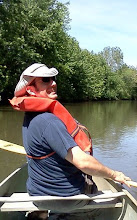This week my niece Shelby discovered my mother’s Nativity scene. These same plastic figurines in muted pastels, ensconced in a wooden cattle stall, have been a fixture in our family for almost three decades. Shelby took to the figurines quickly and began the narrative play of a toddler. Wobble-flying the angel toward Mary she said in a sing-song voice: “Hi there, I am your fairy godmother here to take you to the prince!” That’s funny to be sure. The part that’s disturbing is that many church-goers are as biblically under-informed as Shelby, who is just beginning to hear and learn the stories.
The consequence of the growing trend toward biblical illiteracy is that we as believers find ourselves unable to communicate with each other about the things of faith. The biblical stories are the basis for the common vocabulary of the church. Educating our children about the stories of the Bible not only prepares them for a full life of faith conversation, but it’s a great way for us as parents to increase the balance in our own story-banks.
Many find that getting started is the hardest part when it comes to reading the Bible with their children. Here are some strategies for dealing with two common fears:
Let yourself become a little childlike as you read the biblical stories and know that God’s own Spirit guides the understanding of scripture. Maybe this Christmas before the gifts are grabbed pause to read the story of Jesus’ birth out loud with your family. Family traditions must always have a first time, so grab your new-found Bible story book because there’s no time like the present!
On my desk:
Moore, Eva. Read and Learn Bible (American Bible Society). New York: Scholastic, 2005.
VanNess, Patricia W. Transforming Bible Study with Children: A Guide for Learning Together. Nashville: Abingdon Press, 1991.
The consequence of the growing trend toward biblical illiteracy is that we as believers find ourselves unable to communicate with each other about the things of faith. The biblical stories are the basis for the common vocabulary of the church. Educating our children about the stories of the Bible not only prepares them for a full life of faith conversation, but it’s a great way for us as parents to increase the balance in our own story-banks.
Many find that getting started is the hardest part when it comes to reading the Bible with their children. Here are some strategies for dealing with two common fears:
1) “I can’t seem to re-tell the story in my own words”—That’s okay, because there are numerous resources out there to help. Begin by selecting a book of children’s Bible stories that you are comfortable reading aloud. Give yourself time to get used to reading these prepared stories. Then try retelling in your own words a story with which you are most familiar. With practice, you should begin to find that telling the story becomes easier.Two exceptionally helpful resources to have on hand are an Atlas of the Bible (allows children to see that Bible places are “real” places) and a basic Bible Dictionary (defines terms like “Sheol” and gives brief bios for people like Abimelech).
2) “My kids are going to ask me questions I can’t answer”—Kids appreciate honesty and come hard-wired with lie detectors to know when you’re making things up. A truthful, “I’m still trying to figure that one out too,” goes a long way with kids and assures them that it is okay to ask questions. A sage piece of advice from children’s author Madeline L’Engle is “Don’t answer questions children haven’t asked.” Trust the stories to speak for themselves without a lot of added explanation and let children come to the questions in their own time.
Let yourself become a little childlike as you read the biblical stories and know that God’s own Spirit guides the understanding of scripture. Maybe this Christmas before the gifts are grabbed pause to read the story of Jesus’ birth out loud with your family. Family traditions must always have a first time, so grab your new-found Bible story book because there’s no time like the present!
On my desk:
Moore, Eva. Read and Learn Bible (American Bible Society). New York: Scholastic, 2005.
VanNess, Patricia W. Transforming Bible Study with Children: A Guide for Learning Together. Nashville: Abingdon Press, 1991.

